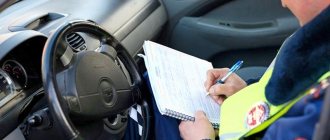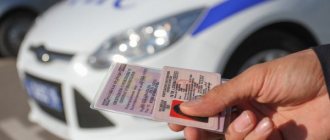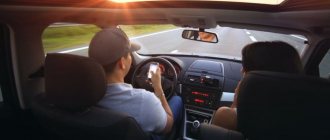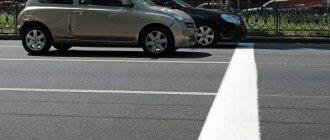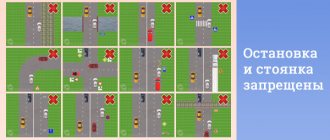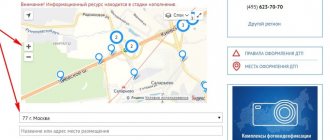Traffic cameras bring huge profits to owners, and discomfort and a lot of inconvenience to drivers. The fear of breaking the rules sometimes forces us to unjustifiably reduce speed. For example, where there is a camera with a limit of 90 km/h, motorists slow down to 60 km/h. But such behavior is not always justified. The main thing is to know at what distance the cameras can recognize the intruder. Experts told how many meters you need to reduce your speedometer to avoid getting a fine.
At the moment, only three types of cameras are common in Russia: KRIS, Arena and Strelka. The latter has received wide functionality, so it is able to record several violations that occurred in the stream at once. It inherited advanced functions from its aviation past. The design is based on the development of target tracking for air strikes. As a result, the achievements of aircraft designers were able to be used in everyday life. Today this complex is the most effective and efficient. The camera is capable of recognizing vehicles at a distance of up to one kilometer. At the same time, the clarity of the calculations is amazing, and the recognition speed range is from 5 to 180 km/h. But Strelka records the license plate only at a distance of up to 50 meters. Thus, the complex is installed where the “racer” can be detected from afar, but motorists have time to orient themselves - the violation is recorded only when approaching the camera.
The famous “tripod”, also known as the “Arena” complex, boasts the ability to recognize the faces of the driver and front passenger. The advantage is that the speed is fixed both in one direction and in the other at a distance of up to 300 meters. The weak points are that the camera is only capable of tracking violations in a straight line, and due to its low location, the recording range is only 100-150 meters. Also, Arena only works effectively on two-lane roads, and the battery runs out after 8 hours of use.
Conversion Product
There are three types of cameras that have been adopted by the traffic police and are now replacing outdated types of monitoring devices. These are the KRIS, Arena and Strelka radar systems.
The most effective system for recording violations is considered to be the famous “Strelka”, which has made significant progress in the administration of an entire traffic flow. In its work, Strelka is fundamentally different from its previously existing foreign and domestic analogues. The control system was developed on the basis of military radar guidance systems for aviation, used to work against several air targets at once. Military developments turned out to be applicable for civilian use.
The Strelka ST01 camera-detector recognizes the speed of vehicles at a distance of up to 1000 m with an accuracy of 2 km/h. The minimum measurement range is 50 m. The speed range for which the complex is configured is from 5 to 180 km/h.
However, recognition of license plates of violators’ cars and their photographic recording is carried out at a distance of no more than 50 m. It is at this distance that the lens focuses and infrared illumination is used.
At the same time, the stationary “Strelka ST 01” monitors the entire traffic flow and is capable of simultaneously monitoring the entire section of a multi-lane roadway within a range of up to 1 km. Its radar can track dozens of targets simultaneously.
Thus, Strelka ST 01 sees intruders even before they can distinguish the mast with the device. However, photographing a car and recognizing it occurs at a much shorter distance, and without such recognition a fine cannot be issued.
Question answer
How many car fines are collected in Russia per year? Infographics
What should be in the letter
When you receive a fine in your mailbox, you should carefully read the contents of the envelope.
It happens that several, at first glance, identical letters arrive with the same violation. Here you should pay attention to the specified date and time of the photo. Perhaps you violated several times on one section of the road.
In this case, you should pay all fines. If the dates and times in the photographs coincide, you must contact the traffic police for clarification.
The letter must include the following information:
- car model;
- registration number;
- owner's last name;
- home address;
- date and time the violation was recorded;
- address where the violation was recorded;
- the essence of the violation itself;
- photo (possibly).
If such a resolution does not contain a photo, this does not mean that the letter can be thrown away and forgotten. It is better to immediately check for fines on the traffic police website to avoid further problems.
Tripod in action
The Arena complex is used by the traffic police and road services much more often than Strelka. This is a well-known “tripod”, which even caused criticism from President Vladimir Putin . It is this device that private companies that have contracted for the maintenance and operation of control cameras love to hide in the bushes.
The Arena device is equipped with a remarkable camera that can look into the car’s interior and recognize the facial features of the driver and front passenger. In this case, speed control can be carried out not only from the front, but also from the rear. That is, “Arena” fires an impulse first forward, and then can duplicate it after the car has passed in order to control compliance with the speed after meeting the camera.
Arena operates at a distance of up to 300 meters and can only track cars in line of sight. Therefore, due to the low location of the “tripod”, its actual control distance is reduced to 100-150 m.
The device records speed in the range from 20 to 250 km/h with a measurement error of 2 km/h. In this case, the camera can determine the speed of cars only in the two nearest lanes. You rarely see her on multi-lane highways, since she cannot see the high-speed lanes and gets confused in her readings. The continuous operation time of the complex depends on the battery. A standard charge lasts for 8 hours.
Is it possible not to pay fines if there is no data about them on the public services portal? More details
How do cameras work?
Video recording devices are designed to detect exceeding speed limits. Camera capabilities also include control of:
- driving in the public transport lane;
- running a stop line or ignoring road signs;
- driving with headlights off;
- driving in the oncoming lane;
- turns from a row that does not involve this maneuver.
The number of functions varies depending on the selected device. Some devices have a narrow specialization, such as Parkon. In the future, recognition of cars with a low environmental class is expected. They will be fined in zones with restrictions on polluting vehicles.
Mobile CRIS
There are other speed control systems. For example, the mobile device KRIS is very similar to the “Arena”, since it is also installed on a “tripod”, but can also work on cars. It is less functional than the systems described above, since it monitors only one lane, and the range is limited to 150 m. The range of measured speeds of the CRIS is the same as that of the Arena, that is, from 20 to 250 km/h, however, The measurement error is 1 km/h. Photographing the car takes place at a distance of 50 to 100 meters. At night, the camera can identify the car by infrared illumination, which operates at a distance of up to 50 m.
Thus, all complexes photograph the target at a distance of 50 m, but they can track at a much greater distance.
How many meters before the traffic police camera should you slow down?
Personally, when driving, I always try to slow down in advance in front of the cameras that record violations. But, nevertheless, I still receive notifications of violations.
It turns out that all cameras record violations at different distances. And you don’t even know which one you’ll come across on the road.
I have studied information on this topic and today I will tell you at what distance cameras record violations and when to slow down.
The main problem really is that different cameras record violations differently and from different distances. Here I will probably give the main types of cameras that are most often used on the roads.
The simplest models are “Arena” and “Chris” . Most often, these are the types of systems you see on the side of the road. They usually stand on a tripod, so it won't be difficult to spot them.
These cameras record speeding at a distance of 10 to 100 meters. And if you were driving in the opposite lane, then there is a high probability that the device will not notice you at all.
Systems such as “Cordon” and “Krechet” have greater power and are capable of operating over longer distances. They are able to recognize intruders at a distance of 150 m.
There are also models that are more dangerous for motorists, such as the Berkut . Such seemingly small-sized radars can easily spot an intruder from a kilometer away. Therefore, it is almost impossible to protect yourself from such a radar.
The fixed distance also depends on external factors, such as climate, time of day and much more. It also depends on the technical capabilities of the camera. It happens that the camera may simply not capture the reckless driver, or some kind of malfunction may simply occur.
Motorcycles do not display camera data at all. If a motorcyclist violated traffic rules, then most likely the camera will attribute this violation to a nearby car.
According to statistics, in 2021 more than 10 thousand stationary and more than 4 thousand mobile cameras for recording traffic violations have already been installed in Russia. More than 100 million traffic citations are issued every month.
When the camera records a violation, the license plate number of the violating vehicle and this data are transmitted to the traffic police. Based on the data received, a decision is made to commit an administrative offense, after which it is transferred to the owner of the car.
The violator must pay a fine in accordance with this regulation. In case of non-payment, the fine turns into a court debt.
In general, even despite some imperfections in this whole camera system, it is now becoming increasingly difficult to get away from these cameras. Some drivers try to fool the cameras by maneuvering or trying to paint over signs, but the devices still recognize them, and drivers risk receiving a large fine or even losing their license.
It happens that cameras can “deceive”. There may be some kind of glitch in the system, due to which it may incorrectly record the violation. If you are faced with the fact that you received a decision on a violation, but you did not see this violation on camera, then you have the right to challenge this decision .
You can file a complaint either with the traffic police or with the district court. If you have enough evidence of your innocence, the court may meet you halfway and cancel the fine.
The main problem is that you will never know which camera is installed on a particular section of the road and at what distance it works. Therefore, avoiding a fine will not be as easy as it seems.
Therefore, try not to exceed the speed limit and drive carefully. And be more careful on the roads.
Secrets of traffic cameras: at what distance to brake to avoid a fine
Our readers often ask the question about the distance at which cameras recording traffic violations begin to drive a car, and about the maximum speed that all-seeing eyes can detect. We answer.
APK "AvtoUragan-VSM2" is a multifunctional photo and video recording system capable of detecting 17 different violations of traffic rules. Among them are: driving through an intersection when there is a prohibiting traffic light, going beyond the stop line at an intersection when the traffic light is prohibiting, driving through a railway crossing when the traffic light is prohibiting, under a prohibiting sign, along tram tracks in the opposite direction, along bicycle paths, pedestrian paths and sidewalks, on the side of the oncoming lane. But the first point is to record speeding.
To overtake the AutoHurricane you will have to be very fast - according to the official specifications, the system catches everything that moves up to 255 km/h while simultaneously processing 4 lanes of traffic. Information about the distance at which the complex begins to record driving sins is not provided.
The new generation photo and video recording complex “Avtodoriya” from the company of the same name is an extremely unpleasant contraption for violators and has an excellent “appetite”. It can punish for speeding, driving in the public transport lane or on the side of the road, violations of parking and stopping rules, driving through a prohibitory traffic light, driving beyond the stop line and other sins.
In addition, Avtodoriya is trained to measure the average speed over a section from 250 meters to 10 kilometers, although there is actually no limit value. The company told us that the all-seeing eye begins to guide a car moving at speeds of up to 300 km/h at a distance of about 100 meters. To outwit Avtodoriya you will have to buy a Koenigsegg or Bugatti.
But the *Odyssey from TCBODD LLC (Technical Center for Road Safety) remained a mystery: with a radar speed meter, it catches vehicles up to 255 km/h, but the manufacturer refused to name its range of operation for obvious reasons.
In total, “Odysseus” helps to “rebuke” those who violate violations for 12 sins. For example, driving through a prohibitory traffic light, crossing a railway track outside a railway crossing, entering a railway crossing with a closed or closing barrier or with a prohibiting traffic light, entering the lane of oncoming traffic and tram tracks in the opposite direction, failure to comply with the requirements of road signs and markings.
If you received a “chain letter”, then with a high degree of probability the violation was recorded “Strelka-ST” - one of the most common photo and video recording systems, which, like the above-mentioned guards, is capable of not only determining the speed of movement, but also distinguishing movement by oncoming lanes, roadsides, public transport lanes, record rules for violating intersections, driving beyond the stop line, and even moving freight vehicles in prohibited areas.
According to some reports, Strelka-ST does not have time to catch a car moving at a speed of over 180 km/h, but it has a kilometer range and detects a violation at a 500-meter distance.
previously produced KRIS-S complexes, and now produces Cordon in stationary and mobile versions. It is not only “rapid-firing” - it catches vehicles up to 300 km/h, but it also records everything in the control zone, that is, it is trained to determine the pace of movement in all lanes in any direction.
Note that among the variety of options, there is a complex that determines the average speed on a traffic section.
So, how to outwit speed detection systems? Let's not be original - don't break it. Some use smartphone apps with a database of installed cameras, which warns in advance of the risk of being fined. Having passed the camera, they fly further again. Do you do this too? Remember that the Rules are mostly written in blood, and racing on public roads usually ends badly.
